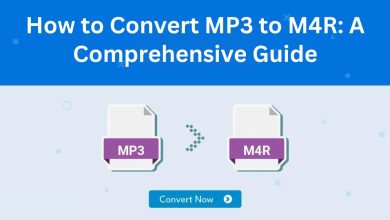
Your business is valuable and if you’re generating less than expected sales, try widening your reach. Your gold may just be in another mine.
With over 4.5 billion internet users worldwide, there’s an abundance of untapped markets wondering if a business like yours exists, but if your business is only using local payment methods, local currency, and language—they can’t find you.
In China, 95% of internet consumers won’t even consider visiting your website if it’s not in Chinese, but these staggering numbers are also true on a global scale:
72.1% of consumers only spend their time on sites written in their own language, and 72.4% of consumers report that they will buy a product with information in their own tongue.
The consequences of the global shifts have limited some markets but, in the same vein, also bring in the opportunity to expand your reach and tap new markets.
In this article, we got to speak to experts from a leading New York web design company and ask their advice on the best way to localize your website in just five simple steps. First, prepare your notepads—heaps of valuable information ahead!
What Is Website Localization?
Website localization is more than popping a web page in Google Translate, it is the process of becoming local. You achieve this by:
- Speaking their language
- List prices in their local currency
- Offer their local payment solutions
- Have sales on their holidays
- Offer customer support that makes sense in their timezone
Sure, some of these elements can be machine-translated, but some aspects cannot, such as:
- Images – including skin color and ethnicities of models
- Cultural icons
- Social norms
- Localized SEO
- Messaging and overall tone
- Legal considerations
Besides content, localization is about overall optimization, such as consistent text size and text wrapping for both mobile and desktop localizations.
Why Is Website Localization Important?
Web localization is important because it closes the gap between what makes your brand a stranger and what makes your brand familiar in the new markets’ context. For the user, it’s all about the content. If the content is not relevant or understandable in their context, they won’t interact with it.
For example, a Hong- Kong-based online fashion shop lists their dress for HKD 155. Without a localized version of the site, a US-based visitor may be put off by how high the price seems, instinctively equating it to USD, and miss out on a great deal (an equivalent of USD 20).
Other faux pas includes accidental offenses, things that simply don’t translate the same way when used in another context, such as asking for information that can invade privacy laws in some countries.
How Much Does Website Localization Cost?
Sure, it can cost you as low as USD 0.08-0.25 a word for a translation service, but the actual cost is much higher—think stretched and broken web design and losses from the poor user experience (UX).
To calculate a more accurate cost of website localization, it’s important to think beyond the tools and software needed. Envision the size and scope of your market expansion.
How To Localize Your Website in 5 Steps Even You Can Follow
By this point, you can likely differentiate between what web localization vs. translation is, but while it may be simple to understand, beginning the process may seem overwhelming.
How do I localize my website easily?
How do I localize my website cost-effectively?
These questions kick-start the first phase of the process:

1. Put together a localization strategy
If you want to maximize your localization ROI, the first step in your localization strategy is to analyze supply and demand.
The cost of localization rises the more languages and countries you want to serve. You don’t have to make your website available in 1,000 languages and locations (unless you’re McDonald’s).
This is why market research is crucial. Not only does it help narrow down the most viable countries and languages, but it also:
- Evaluate interest in your product in a specific market
- Survey the market’s growth rate
- Weigh advantages and weaknesses against surrounding competitors
- Canvass costs such as transportation and customer support
- Compare prices of similar products in the target market
- Understand the locale’s buying preferences and personas
Localized SEO is a must. Your localized website needs to read local, too. Our friends from a New York web design company recommend using localized search engines such as Tudou (China), Yandex (Russia), and Xing (Germany).
These prerequisites help determine if there are enough prospects to justify the investment. It is also important to lay down a set of measurable and comparable success metrics via key performance indicators (KPIs) before, during, and after launch.
Some localization KPIs are:
- Incremental sales in new locations
- Market share
- Translation costs
- Page views from other markets
- Conversion rates
- Social media engagement from other languages
- Customer support cases
- SEO keywords in other markets

2. Identify stakeholders and form your team
There are six main groups of collaborators in the localization process. Namely:
- Developers
- Product Managers
- Marketing team
- Translators
- QA specialists and reviewers
- Legal expert
It’s imperative to ensure that your web localization is compliant with local laws, which makes hiring a local legal specialist a priority. Better to be safe than sorry and end up paying legal fees.
Now that you’ve assembled your team, it’s time to choose how to proceed. There are two localization methods:
- Waterfall localization
This is a sequential workflow where the website and base language is completed first before creating localized versions. There is usually a higher clean-up and adjustment afterward.
- Continuous localization
This is a continuous workflow in comparison which means that localization is taking place parallel to the base website development and content updates. This is also known as Agile localization.

3. Internationalize your website
Rather than hard-coding every adjustment, there is a specific code that:
- Prepares your codebase to receive different configurations based on your target language(s)
- Replaces code with key placeholders that auto-adjusts cultural formatting, number formats and systems, time zones, personal information, as well as text formatting
This code is i18n—otherwise known as the internationalization framework for JavaScript. It is executed only once and automatically detects system preferences, domain, and location settings. Then, it fires the relevant localized site for the viewer, including a fallback protocol for the unknown locale.
Internationalization is already integrated with your website building tool of choice and Content Management System (CMS) such as WordPress, Contentful, and HubSpot.

4. Translation and translation management software
Managing your collaborators and assets is a challenge, even if you have only 1-2 localized websites. Here are the must-have tools for web localization to add to your arsenal:
Translation Management Software (TMS)
This acts as your project manager and coordinator as it acts as a library for your localization workflow and stores versions of different translation and localization projects. Your TMS of choice can be considered a good TMS for your website if it has:
- An API
- Collaboration functions
- Direct website translation
- Translation Memory and glossary (i.e., computer-assisted translation or CAT)
Continuous localization platform (CLP)
This allows you to integrate localization into your web development process. See also: Integrations and plugins with your existing CMS and other tools such as i18n.
Quality Assurance tools
These are incorporated in most CMSs and come with both spelling, grammar, and typo editing as well as in-context editing.
Graphic design and interface prototyping tools
Programs such as Figma, Adobe XD, and Sketch allow your developers to build site designs that adjust based on target language automatically.

5. Test before and after launching
Besides actual testing from testers, it’s important to conduct both localization and linguistic testing for your website beforehand. The purpose of these two are the following:
Localization testing is used to check whether the site is fully functioning in the target locale. It includes:
- Load time and/or Content Delivery Network (CDN) optimization
- Name, time, date, weight, measurements and other numerical values
- Encryption algorithms
- Hardware compatibility
- Upgrades
- Entry fields
- Hyperlinks
- Shopping cart functionality
- Form functionality
- Broken strings/design
Linguistic testing, on the other hand, ensures that the website makes sense to the target locale’s language and context. It includes:
- Image appropriateness
- Spelling errors, improper word usage, syntax and grammar
- Checking of cultural taboos
- Inappropriate or offensive texts
- Misuse of keywords
- Readability and tone
- Untranslated strings

Wrapping Up: Is Web Localization Right For Your Business?
Staying where you are while there is a world unfolding around you is a loss. Take it from these brands that initially failed commercially but found success abroad:
Red Bull
Founded in 1987, sales were slow in its home country of Austria. Since taking the risk to expand operations, the beloved energy drink can be found in 171 countries.
Just Eat
As a food delivery service, the company did its market research and saw London as a potentially profitable area to operate in. Expanding from Denmark to the UK, the move proved to be a wise one, and the continent now generates 71% of its revenue.
Tata Motors
Strict regulations and a highly price-sensitive market made operations in its home country in India near impossible. Tata Motors took the calculated risk of expanding to countries with higher projected success and has now since found stability.
This small sample of companies was founded before online marketing existed. Now, the internet has practically sewed the gap keeping countries and cultures apart.
Potential customers across the world can discover your business at any given time. So it makes sense to make it a space they want to interact with and become a patron.
With this valuable guide from our friends at a leading New York web design company, you can reap the rewards of website localization—and know how to do it smartly.
Learn more from business read Top 14 Reasons Google Isn’t Indexing Your Website.





One Comment